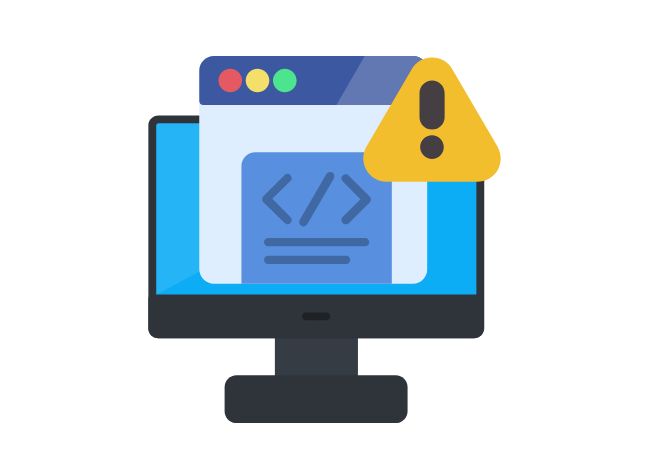In the ever-evolving world of cybersecurity, distinguishing between false positives and real vulnerabilities is critical. Organizations today are bombarded with countless alerts from their security systems. While some may indicate actual threats, many can be false positives, leading to wasted resources and diminished efficiency. Understanding the distinction between the two is essential for maintaining robust security without falling into the trap of unnecessary alerts or missing real threats.
1. Definition:
False Positive: Occurs when a security tool or system mistakenly flags legitimate or benign activities as potential threats or vulnerabilities. This can happen due to overly aggressive security measures, lack of contextual understanding, or inadequately tuned detection systems. Typically, human intervention or further investigation is required to verify that the flagged activity is non-malicious.
Real Vulnerability: Represents an actual weakness or flaw within a system, application, or network that attackers can exploit to compromise security, gain unauthorized access, or disrupt operations. These vulnerabilities demand immediate attention and remediation to mitigate the risks they pose to the system or network.
Discover how Vulnerability Assessment and Penetration Testing can prevent costly breaches and ensure your defenses are up to the challenge. Learn more here.
2. Characteristics:
False Positive:
- Often arises from misconfigurations, outdated detection signatures, or limitations in the analysis algorithms of security tools.
- Can result from anomalies or activities resembling malicious behavior but are innocuous.
Real Vulnerability:
- Represents genuine security weaknesses that, if exploited, can lead to unauthorized access, data breaches, system compromise, or service disruptions.
- Requires immediate attention and remediation to mitigate the risk it poses to the system or network.
3. Detection Challenges:
False Positive:
- This can occur due to overzealous security measures, lack of context in data analysis, or insufficiently tuned detection systems.
- Often needs human intervention or further investigation to confirm its non-malicious nature.
Real Vulnerability:
- Requires comprehensive vulnerability assessments, penetration testing, or code reviews to confirm its existence and potential impact.
- Typically validated through successful exploitation or verification by security experts.
Real-Time Scenario: Imagine a web application security scanner that identifies a particular endpoint as vulnerable to a SQL injection attack. Upon deeper analysis by the security team, it turns out that the endpoint is not directly accessible or linked to any critical database, making the reported vulnerability a false positive.
The Real Dangers of Overlooking True Vulnerabilities
While false positives can waste resources, real vulnerabilities pose genuine risks. These weaknesses in a system’s security architecture provide opportunities for cyber attackers to exploit and compromise critical systems. Failing to address such vulnerabilities can lead to devastating consequences, including data breaches, service disruptions, and reputational damage.
Real vulnerabilities, unlike false positives, demand immediate remediation. They require advanced testing, such as penetration testing and vulnerability assessments, to ensure they are detected early and mitigated effectively. Ignoring these genuine threats can result in financial loss, regulatory fines, and the erosion of trust between businesses and their customers.
Striking the Right Balance
Businesses must strike a delicate balance between managing false positives and addressing real vulnerabilities. Too many false positives can overwhelm security teams, leading to alarm fatigue, where genuine threats are missed amidst the noise. On the other hand, overlooking real vulnerabilities can leave businesses exposed to significant risks.
Investing in automation, artificial intelligence, and regular security audits can help businesses minimize the impact of false positives while maintaining a proactive approach to real threats. By doing so, organizations can protect themselves from cyberattacks while ensuring they do not fall victim to unnecessary distractions.
Business Impact of Reporting False Positives and Real Vulnerabilities:
False Positive:
- Resource Drain: Investigating false positives consumes valuable time and resources, diverting attention from real security concerns. This unnecessary expenditure can strain an organization’s resources and hinder effective security operations.
- Operational Disruption: Frequent false alarms can disrupt normal business operations and create unnecessary panic or concern among stakeholders. The repeated occurrence of such false positives can also lead to alarm fatigue, diminishing the effectiveness of the security response.
- Potential Compliance Issues: False positives that trigger unnecessary actions impacting data privacy or compliance measures can lead to compliance risks. This can result in unintended consequences, such as violating regulatory requirements or incurring fines.
False positives: Mitigating concerns from cybersecurity-minded users
Real Vulnerability:
Data Breach or Loss: The exploitation of a real vulnerability can result in a data breach, leading to financial loss, reputational damage, and potential legal consequences. Such incidents underscore the importance of promptly addressing real vulnerabilities to protect sensitive information.
Service Disruption: Real vulnerabilities, if exploited, can disrupt services or operations, leading to downtime and a loss of productivity. This can have a significant impact on an organization’s bottom line and overall efficiency.
Reputation Damage: The public disclosure of a security incident caused by a real vulnerability can severely harm an organization’s reputation and erode customer trust. Maintaining a strong security posture is essential to preserving an organization’s public image and customer confidence.





